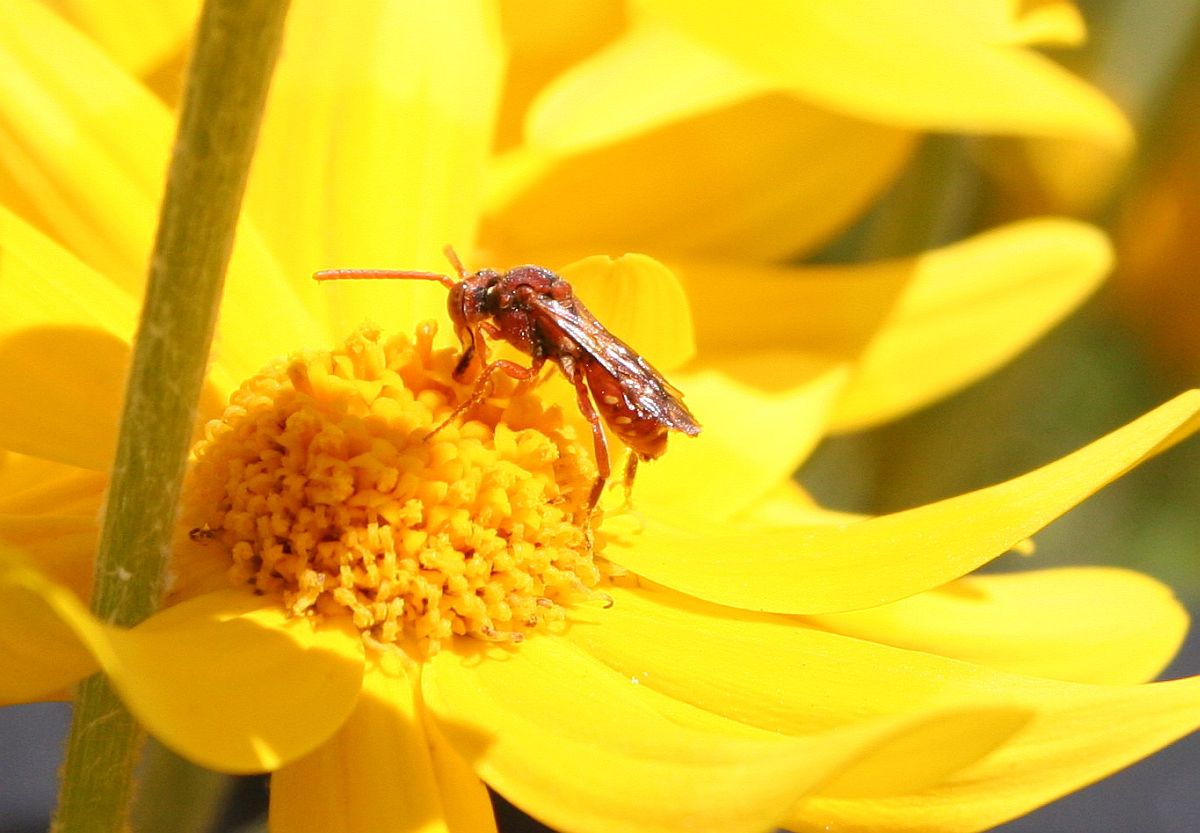June 12
2017 June 12
This small bee was photographed by Ann Tiplady in her Oak Bay garden. We are grateful to Cory Sheffield for identifying it as a cleptoparasitic bee of the genus Nomada.
In case that long word is a “lifer” for anyone, here is what Wikipedia says:
Kleptoparasitism or cleptoparasitism (literally, parasitism by theft) is a form of feeding in which one animal takes prey or other food from another that has caught, collected, or otherwise prepared the food, including stored food (as in the case of cuckoo bees, which lay their eggs on the pollen masses made by other bees). The term is also used to describe the stealing of nest material or other inanimate objects from one animal by another.

 Nomada sp.: (Hym.: Apidae) Ann Tiplady
Nomada sp.: (Hym.: Apidae) Ann Tiplady
Margined White Pieris marginalis
Jeremy Tatum writes: Sorry I missed the Duncan trip on Sunday – I just hadn’t been paying attention to the outings schedule in the Victoria Naturalist! Looks as though a good time was had by all – but no Margined White. So Bill Savale and I went up to Cowichan Station today to see if we could find one. Well, we did – eventually. We had just about given up without having seen one, when at last we saw just one.
Here are my thoughts on the Margined White. I think there are probably two broods – to be seen in April/May, and July/August, but June is probably not a good month. Do not despair – try again in July. The butterfly has a slightly lighter flight than the Cabbage White. It tends to fly low, and it nectars from Herb Robert. You have to go along the railway line north from Cowichan Station, over the bridge, and past the church. Any white that you see beyond there, at the right time of year, is most likely to be a Margined White.
The male is completely immaculate white on the upperside. If you get a good look, you may see two faint grey spots on the forewing upperside – that will be a female. On the underside, the veins are accentuated by grey in the spring brood (remember the butterflies here were once included under “Veined White”), but not in the summer brood, so that, in July, the underside of the wings, like the upperside, is completely white. In spite of the name, there are no particular markings on the margins of any of the wings.
The caterpillar feeds on Nasturtium officinale and Hesperis matronalis – both of which were growing strongly north of Cowichan Station today. In appearance the caterpillar and chrysalis are, as far as I can tell, indistinguishable from those of the European Green-veined White Pieris napi, to which it is obviously closely related. I would put them all under the banner Pieris napi – a Holarctic species with much variation though its large range. However, North American taxonomists currently divide the North American populations into several species on the grounds of minor variations in the maculation.
in the maculation.
Other butterflies seen at Cowichan Station today: Cabbage White, Painted Lady, Red Admiral, Cedar Hairstreak, Western Tiger Swallowtail.
But where have all the Satyr Commas gone?
